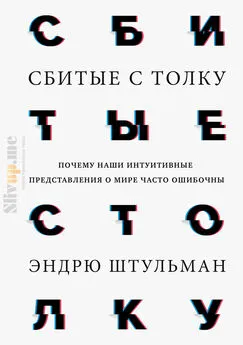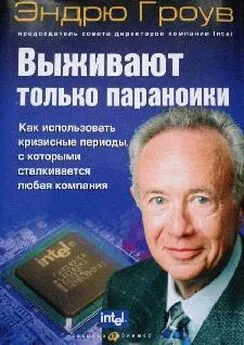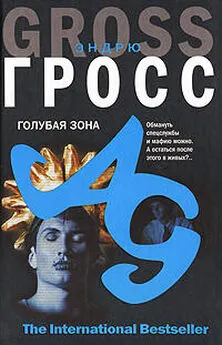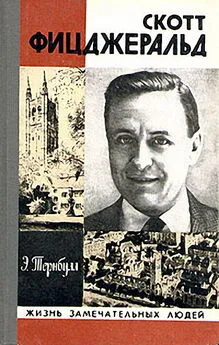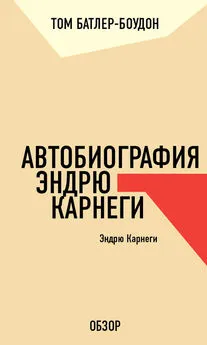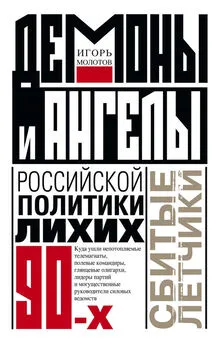Эндрю Штульман - Сбитые с толку
- Название:Сбитые с толку
- Автор:
- Жанр:
- Издательство:Манн, Иванов и Фербер
- Год:2020
- Город:Москва
- ISBN:9785001177616
- Рейтинг:
- Избранное:Добавить в избранное
-
Отзывы:
-
Ваша оценка:
Эндрю Штульман - Сбитые с толку краткое содержание
Сбитые с толку - читать онлайн бесплатно ознакомительный отрывок
Интервал:
Закладка:
Хотя отрицание науки вызывает проблемы для общества, с точки зрения психологии оно неизбежно. Существует глубокий разрыв между когнитивными способностями людей по отдельности и требованиями современного мира. Общество, сложившееся на протяжении последних двух сотен лет, требует мастерского владения высокоуровневыми когнитивными навыками, например умением читать и писать, и понимания сложных когнитивных структур, в том числе научных понятий и теорий. Темы, которые когда-то были на острие научного поиска, сейчас преподают маленьким детям. Человек, не знакомый с этими идеями, мог прекрасно себя чувствовать в обществах прошлого, но те времена ушли. Чтобы выжить в современном мире, необходимо освоить азы науки не меньше, чем уметь готовить, убираться, следить за собой и делать мелкий ремонт.
Современная жизнь сильно зависит от науки, поэтому препятствия в понимании науки игнорировать нельзя. Проблему интуитивных теорий нужно принимать всерьез. Нужно создать среду, которая поможет осознать эти теории и разработать пути их преодоления — в классной комнате и за ее пределами. Интуитивные теории будут с нами всегда, так как их заново открывает каждый ребенок. Но нельзя позволить детским представлениям ограничивать возможности, которые открываются во взрослом возрасте.
Библиография
American Burn Association (2013). National burn repository. Chicago: American Burn Association.
Andersen, H. C. (1844/1981). The ugly duckling. In L. Owens (ed. and trans.), The complete Hans Christian Andersen fairy tales , 15–20. New York: Avenel Books. Издание на русском языке: Андерсен, Г. Х. Гадкий утенок / Г. Х. Андерсен. М.: Детская литература, 1979.
Anggoro, F. K., Waxman, S. R., and Medin, D. L. (2008). Naming practices and the acquisition of key biological concepts: Evidence from English and Indonesian. Psychological Science, 19, 314–319.
Anscombe, G. E. M. (1959). An introduction to Wittgenstein’s Tractatus. New York: Harper.
Astuti, R., and Harris, P. L. (2008). Understanding mortality and the life of the ancestors in rural Madagascar. Cognitive Science, 32, 713–740.
Astuti, R., Solomon, G. E., and Carey, S. (2004). Constraints on conceptual development: A case study of the acquisition of folkbiological and folksociological knowledge in Madagascar. Monographs of the Society for Research in Child Development, 1–161.
Atran, S., Medin, D., Lynch, E., Vapnarsky, V., Ek, E. U., and Sousa, P. (2001). Folkbiology doesn’t come from folkpsychology: Evidence from Yukatek Maya in cross-cultural perspective. Journal of Cognition and Culture, 1, 3–42.
Au, T. K. F., Chan, C. K., Chan, T. K., Cheung, M. W., Ho, J. Y., and Ip, G. W. (2008). Folkbiology meets microbiology: A study of conceptual and behavioral change. Cognitive Psychology, 57, 1–19.
Au, T. K., Sidle, A. L., and Rollins, K. B. (1993). Developing an intuitive understanding of conservation and contamination: Invisible particles as a plausible mechanism. Developmental Psychology, 29, 286–299.
Babai, R., Sekal, R., and Stavy, R. (2010). Persistence of the intuitive conception of living things in adolescence. Journal of Science Education and Technology, 19, 20–26.
Baillargeon, R. (1987). Object permanence in 3- and 4-month-old infants. Developmental Psychology, 23, 655–664.
Baillargeon, R., and Hanko-Summers, S. (1990). Is the top object adequately supported by the bottom object? Young infants’ understanding of support relations. Cognitive Development, 5, 29–53.
Baillargeon, R., Needham, A., and DeVos, J. (1992). The development of young infants’ intuitions about support. Early Development and Parenting, 1, 69–78.
Baillargeon, R., Spelke, E. S., and Wasserman, S. (1985). Object permanence in five-month-old infants. Cognition, 20, 191–208.
Barber, B. (1961). Resistance by scientists to scientific discovery. Science, 134, 596–602.
Barman, C. R., Barman, N. S., and Miller, J. A. (1996). Two teaching methods and students’ understanding of sound. School Science and Mathematics, 96, 63–67.
Bascandziev, I., and Harris, P. L. (2010). The role of testimony in young children’s solution of a gravity-driven invisible displacement task. Cognitive Development, 25, 233–246.
Bascandziev, I., and Harris, P. L. (2011). Gravity is not the only ruler for falling events: Young children stop making the gravity error after receiving additional perceptual information about the tubes mechanism. Journal of Experimental Child Psychology, 109, 468–477.
Bearon, L. B., and Koenig, H. G. (1990). Religious cognitions and use of prayer in health and illness. Gerontologist, 30, 249–253.
Bechtel, W., and Richardson, R. C. (1998). Vitalism. In E. Craig (ed.), Routledge encyclopedia of philosophy, 639–643. London: Routledge.
Bering, J. M. (2002). Intuitive conceptions of dead agents’ minds: The natural foundations of afterlife beliefs as phenomenological boundary. Journal of Cognition and Culture, 2, 263–308.
Bering, J. M. (2006). The folk psychology of souls. Behavioral and Brain Sciences, 29, 453–498.
Berkman, M. B., and Plutzer, E. (2011). Defeating creationism in the courtroom, but not in the classroom. Science, 331, 404–405.
Berthier, N. E., DeBlois, S., Poirier, C. R., Novak, J. A., and Clifton, R. K. (2000). Where’s the ball? Two-and three-year-olds reason about unseen events. Developmental Psychology, 36, 394–401.
Bidet-Ildei, C., Kitromilides, E., Orliaguet, J. P., Pavlova, M., and Gentaz, E. (2014). Preference for point-light human biological motion in newborns: Contribution of translational displacement. Developmental Psychology, 50, 113–120.
Biederman, I., and Shiffrar, M. M. (1987). Sexing day-old chicks: A case study and expert systems analysis of a difficult perceptual-learning task. Journal of Experimental Psychology: Learning, Memory and Cognition, 13, 640–645.
Bishop, B. and Anderson, C. A. (1990). Student conceptions of natural selection and its role in evolution. Journal of Research in Science Teaching, 27, 415–427.
Blacker, K. A., and LoBue, V (2016). Behavioral avoidance of contagion in children. Journal of Experimental Child Psychology, 143, 162–170.
Blancke, S., Van Breusegem, F., De Jaeger, G., Braeckman, J., and Van Montagu, M. (2015). Fatal attraction: The intuitive appeal of GMO opposition. Trends in Plant Science, 22, 1360–1385.
Blown, E. J., and Bryce, T. G. K. (2013). Thought-experiments about gravity in the history of science and in research into children’s thinking. Science and Education, 22, 419–481.
Bowler, P. J. (1992). The eclipse of Darwinism: Anti-Darwinian evolution theories in the decades around 1900. Baltimore: John Hopkins University Press.
Boyes, E., and Stanisstreet, M. (1993). The greenhouse effect: children’s perceptions of causes, consequences, and cures. International Journal of Science Education, 15, 531–552.
Brainerd, C. J., and Allen, T. W. (1971). Experimental inductions of the conservation of «first-order» quantitative invariants. Psychological Bulletin, 75, 128–144.
Brulliard, K. (2016, May 19). People love watching nature on nest cams — until it gets grisly. Washington Post. http://www.washingtonpost.com/news/animalia/wp/2016/05/19/when-nest-cams-get-gruesome-some-viewers-cant-take-it/.
Buchholz, L. (2015). I know what’s best for the health of my family, and it’s magical thinking. Womanspiration, 11. Retrieved from http://reductress.com/post/i-know-whats-best-for-the-health-of-my-family-and-its-magical-thinking/.
Byers-Heinlein, K., and Garcia, B. (2015). Bilingualism changes children’s beliefs about what is innate. Developmental Science, 18, 344–350.
Bynum, W. (2012). A little history of science. New Haven, CT: Yale University Press.
Cacchione, T., and Burkart, J. M. (2012). Dissociation between seeing and acting: Insights from common marmosets (Callithrix jacchus). Behavioural Processes, 89, 52–60.
Cacchione, T., and Call, J. (2010). Intuitions about gravity and solidity in great apes: The tubes task. Developmental Science, 13, 320–330.
Cacchione, T., Call, J., and Zingg, R. (2009). Gravity and solidity in four great ape species (Gorilla gorilla, Pongo pygmaeus, Pan troglodytes, Pan paniscus): Vertical and horizontal variations of the table task. Journal of Comparative Psychology, 123, 168–180.
Cacchione, T., and Krist, H. (2004). Recognizing impossible object relations: intuitions about support in chimpanzees ( Pan troglodytes ). Journal of Comparative Psychology, 118, 140–148.
Callanan, M. A., and Oakes, L. M. (1992). Preschoolers’ questions and parents’ explanations: Causal thinking in everyday activity. Cognitive Development, 7 , 213–233.
Cancer Research UK (2015, Oct. 26). Ten persistent myths about cancer that are false. The Intendent. Retrieved from www.independent.co.uk/author/cancer-research-uk.
Carbon, C. C. (2010). The earth is flat when personally significant experiences with the sphericity of the earth are absent. Cognition, 116, 130–135.
Carey, S. (1985). Conceptual change in childhood. Cambridge, MA: MIT Press.
Carey, S. (1988). Conceptual differences between children and adults. Mind and Language, 3, 167–181.
Carey, S. (1991). Knowledge acquisition: Enrichment or conceptual change. In S. Carey and R. Gelman (eds.), The epigenesis of mind: Essays in biology and cognition, 257–291. Hillsdale, NJ: Lawrence Erlbaum.
Carey, S. (2009). The origin of concepts. Oxford, UK: Oxford University Press.
Catley, K. M., and Novick, L. R. (2008). Seeing the wood for the trees: An analysis of evolutionary diagrams in biology textbooks. BioScience, 58, 976–987.
Catley, K. M., and Novick, L. R. (2009). Digging deep: Exploring college students’ knowledge of macroevolutionary time. Journal of Research in Science Teaching, 46, 311–332.
Catley, K. M., Novick, L. R., and Shade, C. K. (2010). Interpreting evolutionary diagrams: When topology and process conflict. Journal of Research in Science Teaching, 47, 861–882.
Center for Disease Control (2015). Measles cases and outbreaks. Retrieved from www.cdc.gov/measles/cases-outbreaks.html.
Читать дальшеИнтервал:
Закладка:
